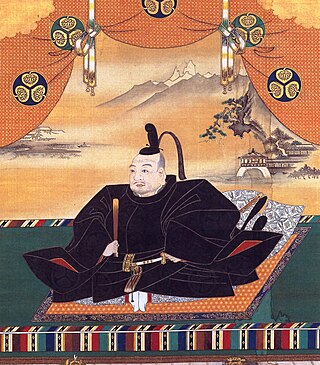
Tokugawa Ieyasu was the founder and first shōgun of the Tokugawa shogunate of Japan, which ruled from 1603 until the Meiji Restoration in 1868. He was one of the three "Great Unifiers" of Japan, along with his former lord Oda Nobunaga and fellow Oda subordinate Toyotomi Hideyoshi. The son of a minor daimyo, Ieyasu once lived as a hostage under daimyo Imagawa Yoshimoto on behalf of his father. He later succeeded as daimyo after his father's death, serving as ally, vassal and general of the Oda clan, and building up his strength under Oda Nobunaga.
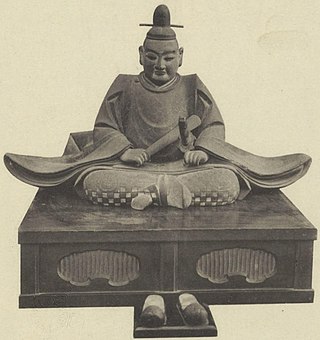
Oda Nobuhide was a Japanese daimyō and magistrate of the Sengoku period known as "Tiger of Owari" and also the father of Oda Nobunaga the first "Great Unifier" of Japan. Nobuhide was a deputy shugo (Shugodai) of lower Owari Province and head of the Oda clan which controlled most of Owari.
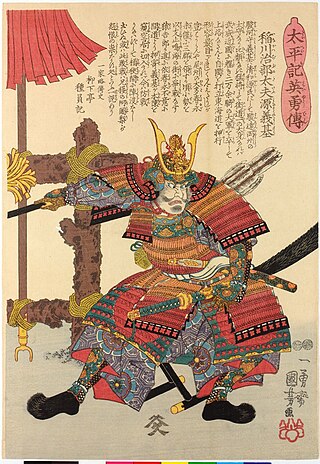
Imagawa Yoshimoto was a Japanese daimyō of the Sengoku period. Based in Suruga Province, he was known as The number one Daimyō in the Tōkaidō; he was one of the three daimyō that dominated the Tōkaidō region. He died in 1560 while marching to Kyoto to become Shogun. He was killed in the village of Dengakuhazama in Okehazama by Oda Nobunaga.
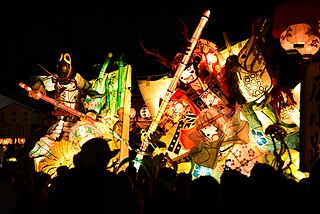
Kariya is a city in central Aichi Prefecture, Japan. As of 1 October 2019, the city had an estimated population of 153,162 in 66,751 households, and a population density of 3,040 persons per km2. The total area of the city is 50.39 square kilometres (19.46 sq mi).
Mizuno Nobumoto was a Japanese daimyō of the Sengoku period. He was Tokugawa Ieyasu's uncle through Matsudaira Hirotada's marriage to his sister, Odai no Kata.
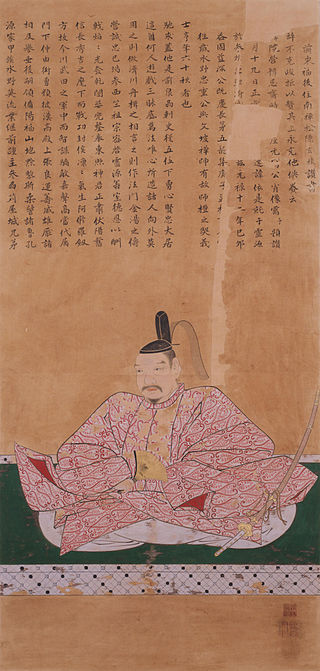
Mizuno Tadashige was a retainer of the Tokugawa clan following the later years of the Azuchi-Momoyama period of the 16th century.

Okazaki Castle is a Japanese castle located in Okazaki, Aichi Prefecture, Japan. At the end of the Edo period, Okazaki Castle was home to the Honda clan, daimyō of Okazaki Domain, but the castle is better known for its association with Tokugawa Ieyasu and the Tokugawa clan. The castle was also known as "Tatsu-jō " (龍城).
Torii Tadayoshi was a Japanese samurai of the mid-Sengoku period. Longtime retainer of Matsudaira Hirotada and later, his son Tokugawa Ieyasu. When Ieyasu was sent to Sunpu Castle to be a hostage to the Imagawa clan, Tadayoshi served alongside Matsudaira Shigeyoshi as castle warden of Okazaki Castle. He was renowned as a model of frugality, eventually saving up enough money by the time Ieyasu returned, in order to rearm the Matsudaira (Tokugawa) clan.
Matsudaira Hirotada was the lord of Okazaki Castle in Mikawa province, Japan during the Sengoku Period of the 16th century. He is best known for being the father of Tokugawa Ieyasu, founder of the Tokugawa shogunate.

The Matsudaira clan was a Japanese samurai clan that descended from the Minamoto clan. It originated in and took its name from Matsudaira village, in Mikawa Province. During the Sengoku period, the chieftain of the main line of the Matsudaira clan, Matsudaira Motoyasu became a powerful regional daimyo under Oda Nobunaga and Toyotomi Hideyoshi and changed his name to Tokugawa Ieyasu. He subsequently seized power as the first shōgun of the Tokugawa shogunate which ruled Japan during the Edo period until the Meiji Restoration of 1868. Under the Tokugawa shogunate, many cadet branches of the clan retained the Matsudaira surname, and numerous new branches were formed in the decades after Ieyasu. Some of those branches were also of daimyō status.

Mizuno Tadamasa was a Japanese samurai lord and daimyo of the Sengoku period. He was the father of Odai no Kata, the mother of shōgun Tokugawa Ieyasu. He was a member of the Mizuno clan.

The Fukui Domain, also known as the Echizen Domain, was a domain (han) of the Tokugawa Shogunate of Japan during the Edo period from 1601 to 1871.

Iwasaki Castle is a hill castle located in the city of Nisshin, Aichi Prefecture, Japan. It was built during the Sengoku period in Owari Province and was a support castle to Shobata Castle.

Sanuki Domain was a feudal domain under the Tokugawa shogunate of Edo period Japan, located in Kazusa Province. It was centered on Sanuki Castle in what is now the city of Futtsu, Chiba.

Kariya Domain was a feudal domain of the Edo period Tokugawa shogunate located in Mikawa Province, Japan, what is now part of the modern-day cities of Kariya and Anjō. It was centered on Kariya Castle, which was located in what is now the city of Kariya.

Tahara Castle is a Japanese castle located in Tahara, southern Aichi Prefecture, Japan. At the end of the Edo period, Tahara Castle was home to the Miyake clan, daimyō of the 12,000 koku Tahara Domain.
Matsudaira Ietada was a Japanese samurai of the Sengoku period and the 5th daimyō (lord) of the Katahara branch of the Matsudaira clan, which was based in Katahara Castle, Mikawa Province. Ietada was also known as Matsudaira Matashichiro, and had the nickname Kii no kami, or "The Defender of Kii" (紀伊守).
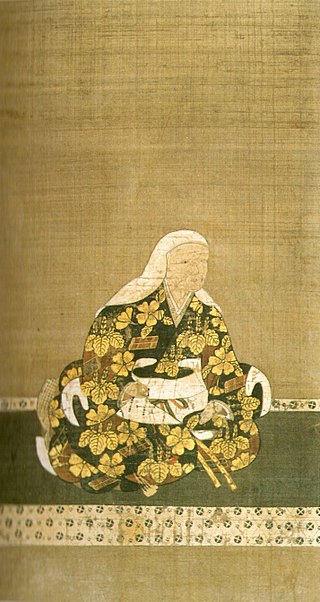
Odai no kata, also known as Dai, Daishi, and Denzûin, was a Japanese noble lady from the Sengoku period.

The Battle of Muraki Castle was one of the first victories of the young Oda Nobunaga in his struggle to unite the province of Owari against the powerful Imagawa Yoshimoto, whose army had invaded the eastern parts of Owari.















